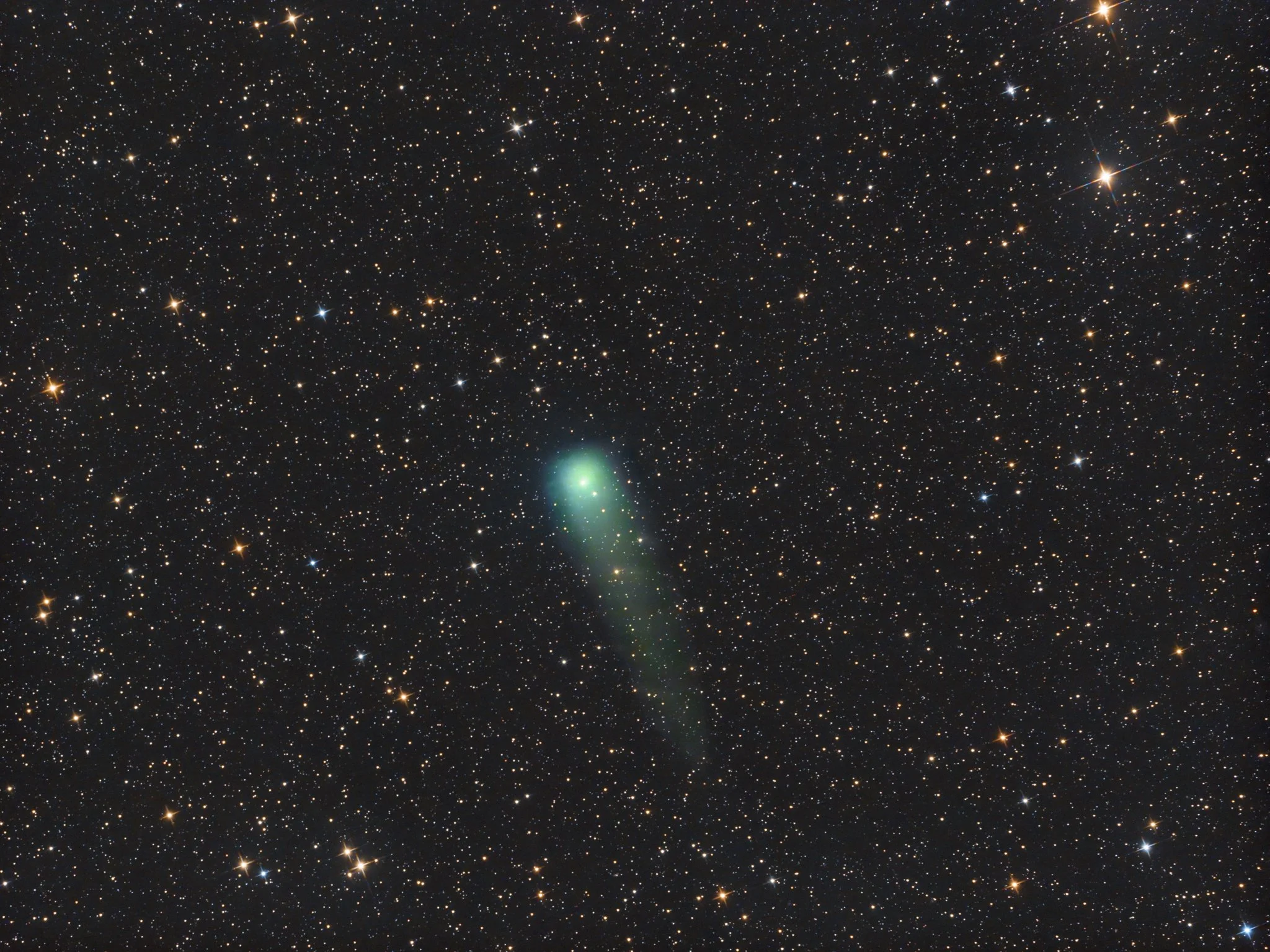
AAPOD2 Image Archives
Comet 2022 E3 (ZTF)
Image Title: Comet 2022 E3 (ZTF)
Image Description and Details : Comet 2022 E3 (ZTF) is one of the brightest comet this year.
A pretty comet with blue-green nucleus.
Nikon Z50 + Sigma 70-200 Sport at 200mm F3.5
Skywatcher StarAdventurer Mini
217 x 15" ISO 1600
Copyright: Enol M.
C/2017 K2 (PANSTARRS) - Across the Universe
Image Description and Details : On Charles Messier's birthday, I honored him by photographing comet C/2017 K2 (PANSTARRS) as it traveled through our solar system in constellation of serpens. Distance at time of recording was 281 Mio. km. I recorded the image from my Garden at Schwabach (Bavaria), Germany at Bortle 5 Class. Equipment: Telescope: Skywatcher 150/750 PDS Mount: Skywatcher EQ5-Pro Camera: QHY163C (Gain 120, Offset 50, -15°C) Guiding: ZWO ASI 120 MC-S, PHD2 Recordingsoftware: N.I.N.A Exposure: 138 x 30s Lights Total exposure time: 1,09 Hours 50 Darks, 30 Flats, 30 Darkflats Stacking: Astropixelprocessor Image Editing: Adobe Photoshop, Adobe Lightroom
Copyright: Michael Kraus
comet c / 2017 T2 Panstarrs
This is the comet c / 2017 T2 Panstarrs, imaged thru its passage of sh2- 205.
Based on the absolute magnitude published for this comet by the British Astronomical Association's Comet Section, it is estimate that it may be around mag 7 at perihelion.
Comet C/2017 T2 (PANSTARRS) will make its closest approach to the Sun, at a distance of 1.61 AU.
From BAA….C/2017 T2 (PANSTARRS) was discovered at 20th magnitude in 2017 September when it was it was 9.3 au from the Sun. It is heading for a perihelion at q=1.6 au in early 2020 May. The comet is currently in conjunction but it was apparently brightening rapidly when last seen in April. It should become visible from the UK in mid July very low in the morning sky as it moves slowly NE in Taurus. By then it will be 3.8 au from the Sun and 4.5 au from the Earth. It moves higher in the sky and will be visible throughout the autumn, winter and spring as a circumpolar object and it remains well placed in Ursa Major at perihelion. Magnitude estimates through the late summer and autumn should help to constrain the lightcurve.
Copyright: Cristina Cellini




